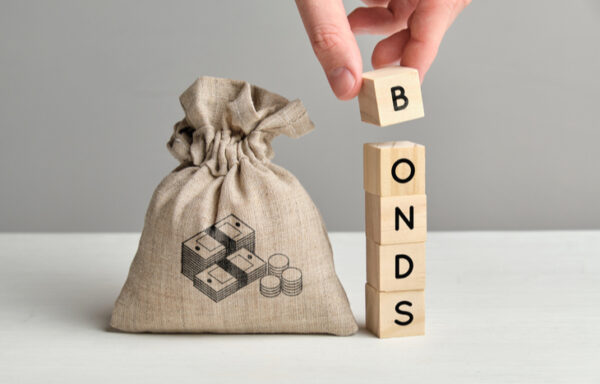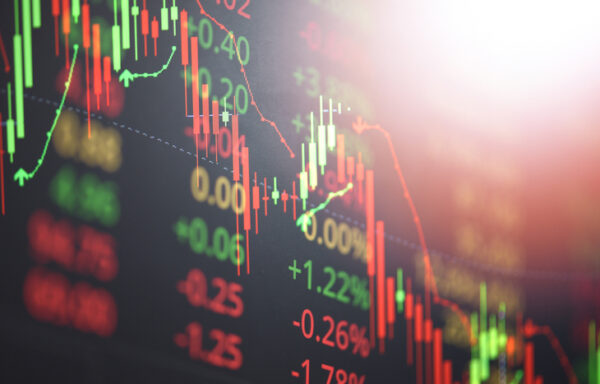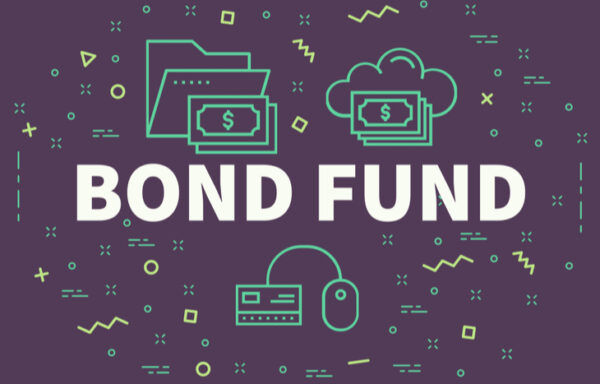READ THIS: Why You Should Avoid Bond Funds
Americans are saving more. We’re holding more cash and moving to safer assets, like bonds and gold. But here’s why you should avoid bond funds – and do this instead. We’re going to look at both types of bonds: investment-grade and junk bonds.
From Baltimore – Thanks to the coronavirus crisis, Americans are saving more than they have at any time since 1981. The U.S. Bureau of Economic Analysis reported last week that the savings rate surged to 13.1% in March, up from 9% in February. Collectively, we’re now holding more than $2.2 trillion in savings.
That would seem to be a good thing, given the perennial concern that most Americans don’t save enough for retirement. But our new savings habit could well be short-lived. After all, it’s primarily due to the fact that we simply can’t spend on the things we would like to. It’s very possible that once restaurants and malls reopen, we will revert to our profligate ways!
In the meantime, let’s look at one of the best ways for you to diversify your holdings. After all, your cash is earning you zero interest. Your savings accounts, money market accounts and Treasury bonds now yield next to nothing. However, there is an asset class that allows you to put your cash to work for added yield while not sacrificing too much safety. That’s bonds.
So we’re going to look at why you should consider buying bonds. But not just any bonds… and definitely not certain types of bond funds.
On Market Wake-Up Call, Chief Income Strategist Marc Lichtenfeld explains why Members absolutely need to consider buying certain high-yielding bonds right now, including a few junk bonds. And some are in the energy sector. As he discusses with Associate Franchise Publisher Rachel Gearhart, individual bonds still boast low default rates. So unless the company defaults – a very low risk, given that the government is rolling out multiple plans to prevent it – you’re contractually guaranteed to get paid the value of the bonds upon maturity, plus interest payments.
But be warned: That is not true with bond funds. With bond funds, prices can fluctuate wildly and there is no principal guarantee.
It’s true that stocks have historically been more exciting than bonds. But this coronavirus crisis has turned that thinking on its head. As you can see in the charts below, just holding a long-term Treasury exchange-traded fund (ETF) would have given you double-digit returns since the start of the year… and there we’re talking about U.S. government-backed, AAA rated bonds!
The economic fallout from the crisis is creating fascinating new paradigms in the bond market that savvy investors are taking advantage of. Like stocks, bonds have been hammered by this crisis. But unlike stocks, many types of bonds have not rebounded. And that’s created a huge opportunity in so-called “distressed” bonds, which are selling at deep discounts but remain a very good investment.
Convertible and Junk Bonds: Tips From the Expert
Marc has recently made some interesting points regarding the bond market…
- The Fed is going all out to incentivize investors to buy more debt (through bonds) by promising to back municipal bonds (munis) and corporate bonds, for instance.
- Marc likes certain “fallen angel” bonds. These are previously high-rated bonds that have fallen to high-yield (or “junk”) status as a result of the crisis. These bonds pay higher yields, but are now selling for 80 cents or 90 cents on the dollar – and sometimes cheaper.
- Wall Street is seeing renewed interest in convertible bonds. This is when big companies like Carnival (NYSE: CCL) issue the kind of bonds that earn a high yield, but also offer investors the option to convert their shares into equity before the bond matures. Not only does this allow for a larger profit opportunity, but also the profit opportunity from the shares is safer because if the stock falls, you can just let your bonds mature and get your principal back.
- And as Marc points out in his recent presentation, the crash in the energy sector means that investors can now buy certain respectable energy bonds for only 10 cents or 20 cents on the dollar!
To better understand the differences in the various categories of bonds you can buy – as well as understand their recent performance and risk level – I thought it easiest to first look at the recent performance and holdings of some popular bond ETFs.
Of course, these ETFs act like indexes of these bond categories. Marc does not recommend bond ETFs. Instead, he likes individual bonds that Members can hold to maturity or possibly sell before maturity if their prices rise enough.
First, let’s look at the iShares iBoxx $ Investment Grade Corporate Bond ETF (NYSE: LQD). This investment-grade bond fund holds mostly A or BBB rated corporate bonds, with 10% to 15% in higher-rated AA or AAA bonds. It’s currently yielding 3.41%, with a total year-to-date return of 2.03%.
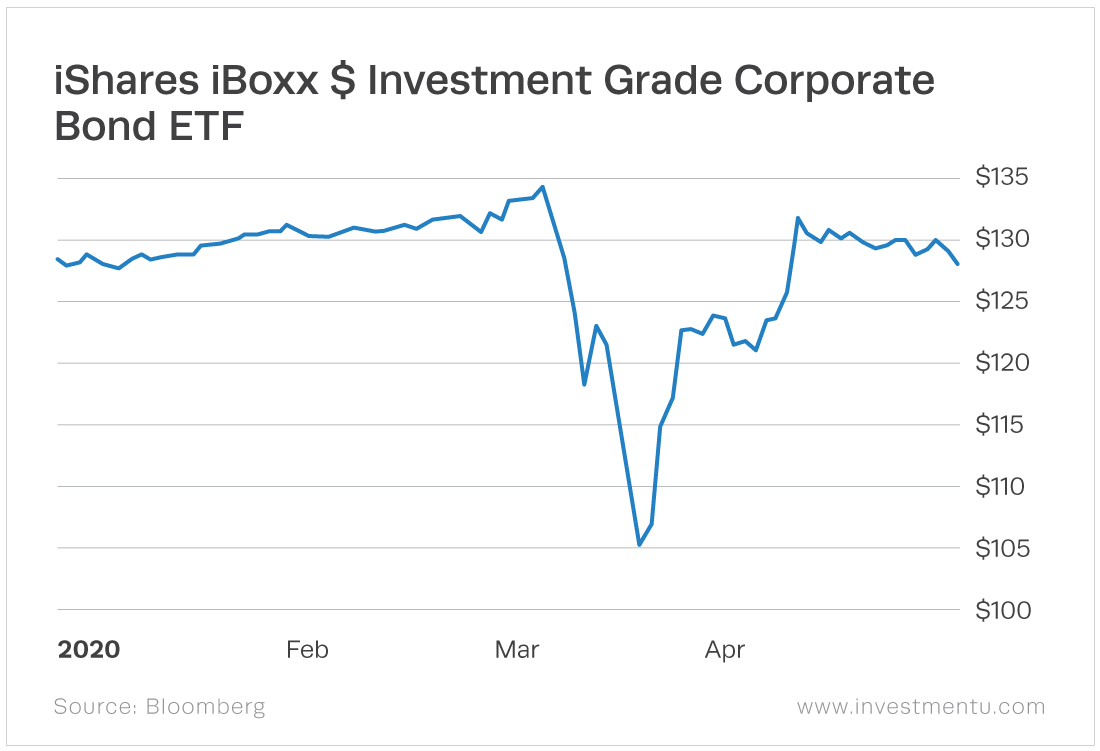
Next, we’ll look at the iShares iBoxx $ High Yield Corporate Bond ETF (NYSE: HYG), which includes “junk bonds.” It currently yields 5.67% with a year-to-date total return of negative 8.82%. Ten percent of its holdings are in bonds with a rating below B, and more than 85% of its holdings are in bonds rated B or BB. This fund holds very few bonds rated higher than BB.
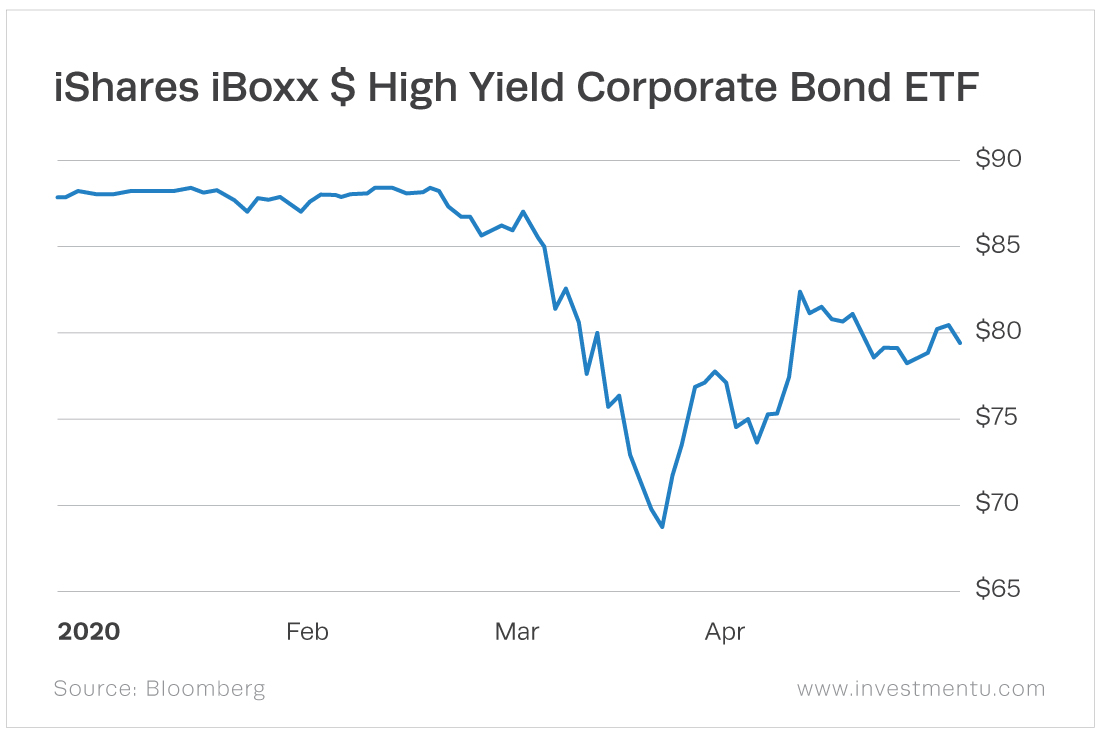
Next, the VanEck Vectors Fallen Angel High Yield Bond ETF (Nasdaq: ANGL). This fund also holds junk bonds to get higher yields, but the bonds are issued by companies whose bonds have a history of being investment-grade… So this rating could be temporary. It’s yielding more than 6% with a year-to-date total return of negative 8.38%. This fund holds more than 95% in bonds rated BB or B.
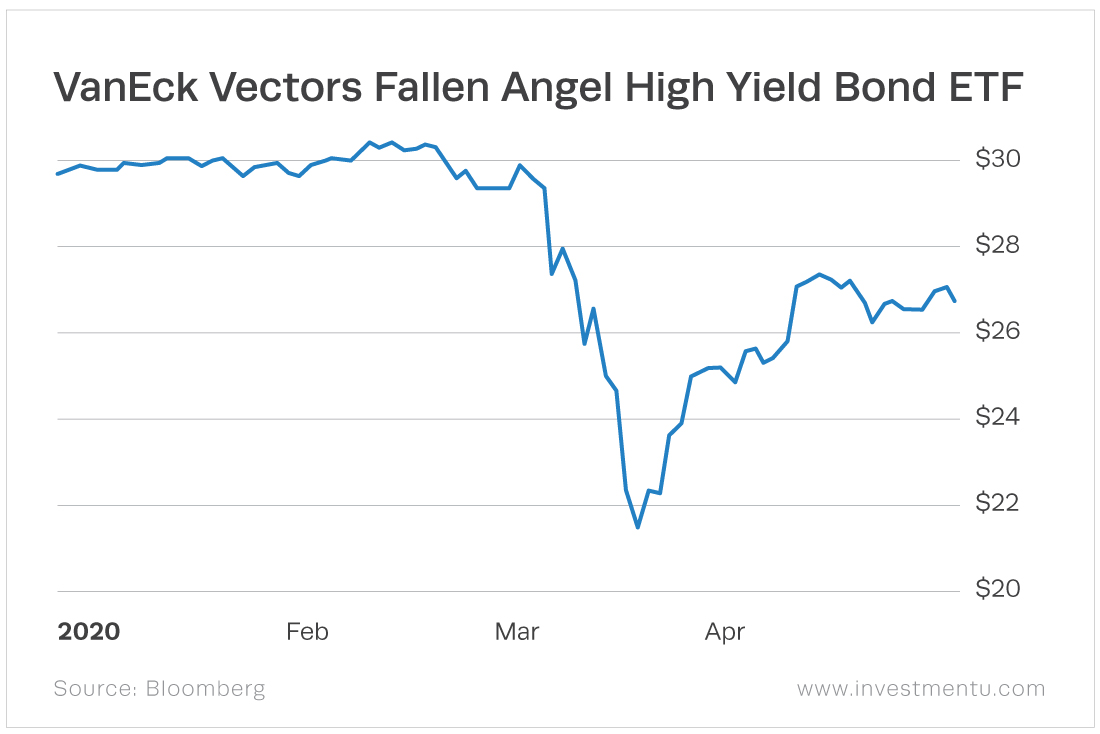
Next, the iShares 20+ Year Treasury Bond ETF (Nasdaq: TLT). It currently yields 1.82%. Its year-to-date total return is 23.81%, and 100% of its holdings are AAA rated U.S. government bonds.
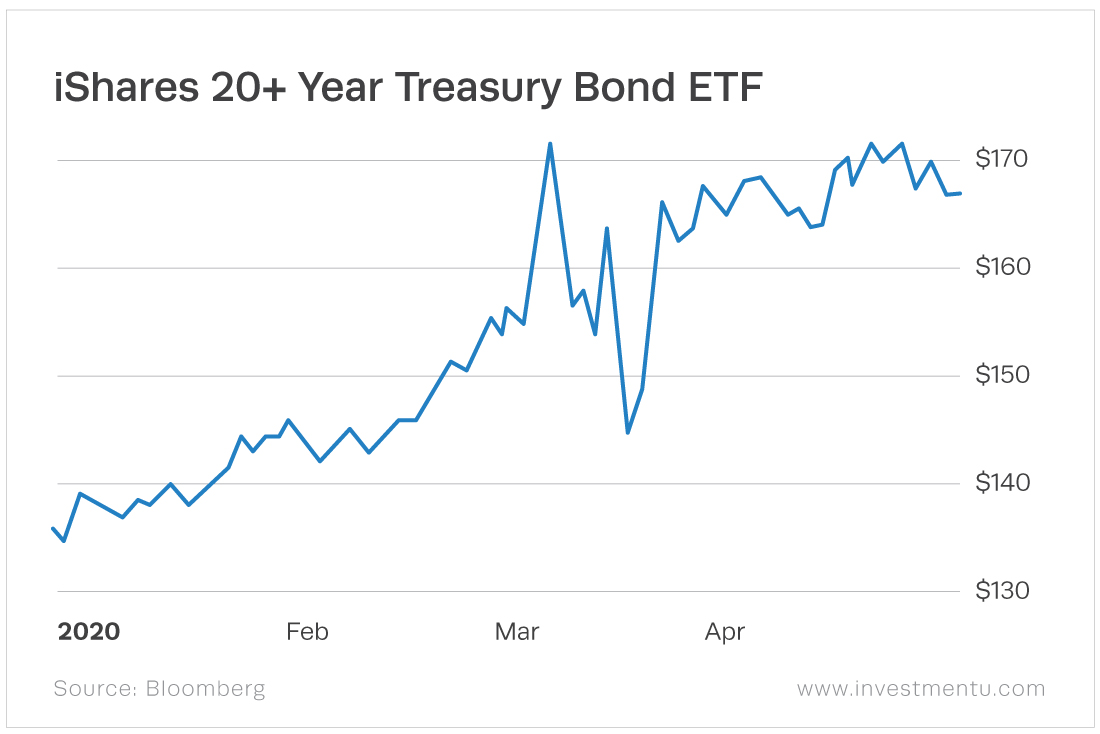
Below is a chart of the iShares 1-3 Year Treasury Bond ETF (Nasdaq: SHY). It yields 2.01%. Its year-to-date total return is 2.84%. Its holdings are in top-rated, short-term U.S. government bonds.
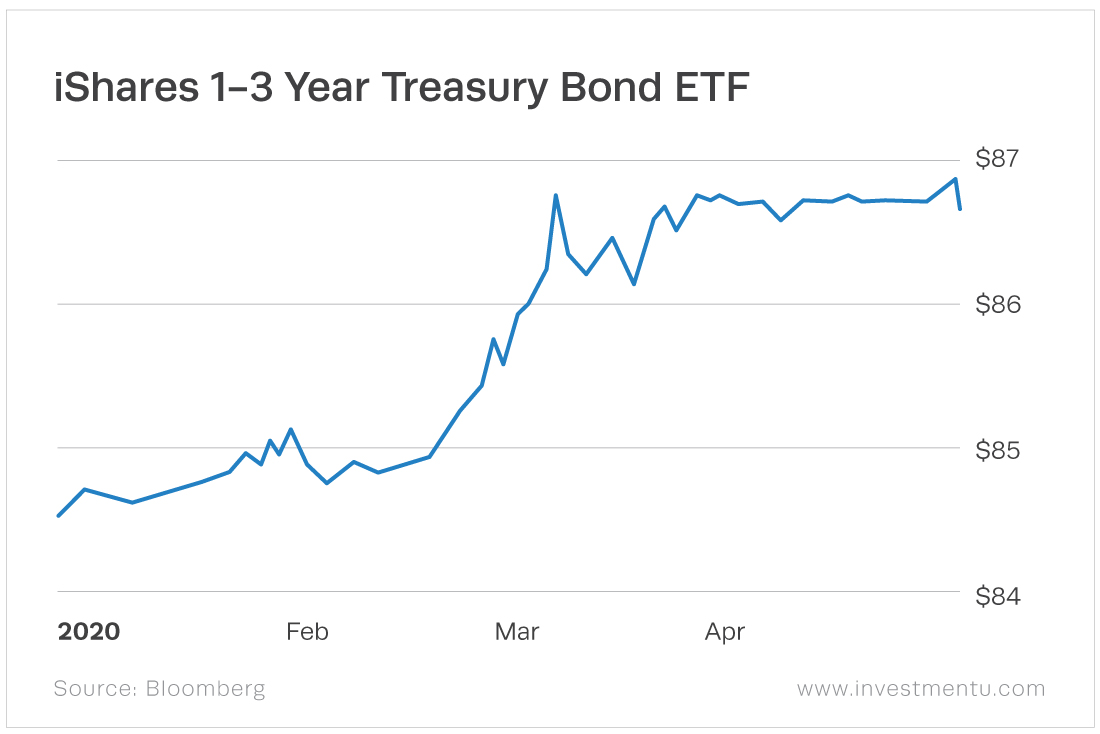
Up next, the iShares iBoxx $ High Yield ex Oil & Gas Corporate Bond ETF (Nasdaq: HYXE). Again, this fund holds junk bonds. It currently yields 5.67%, and its year-to-date total return is negative 6.09%. More than 85% of its holdings are in BB and B rated energy sector bonds, with more than 10% in bonds rated lower than B.
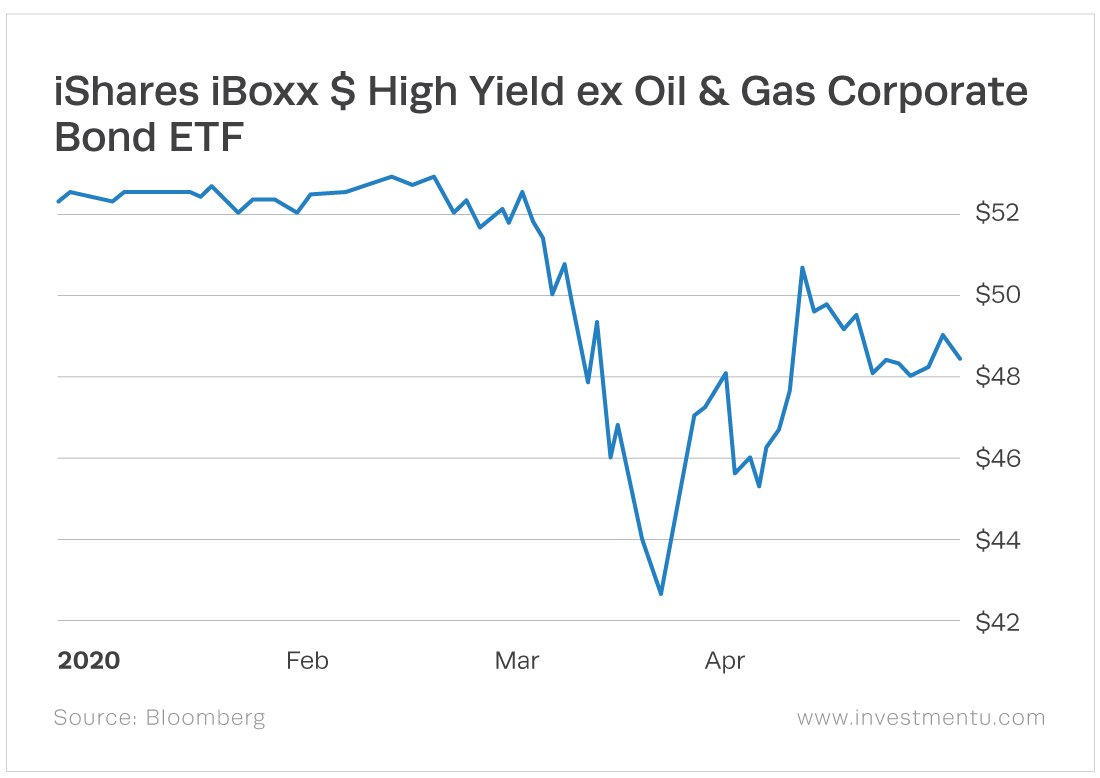
Below is the VanEck Vectors High-Yield Municipal Index ETF (CBOE: HYD). It yields 4.42% with a year-to-date total return of negative 11.52%. This is interesting because people generally don’t like to call munis “junk bonds.” But with this fund holding more than 40% in “unrated municipal bonds,” that is exactly what it is – a junk-bond fund. Unrated bonds often mean the bonds are small and thinly traded – indicating they are hard to price. While there are tax advantages to munis and their default rate has historically been low, there have been bankruptcies (think Detroit and Puerto Rico). It’s important to note that due to the coronavirus, the U.S. government recently said it would back munis to help cities during this crisis.
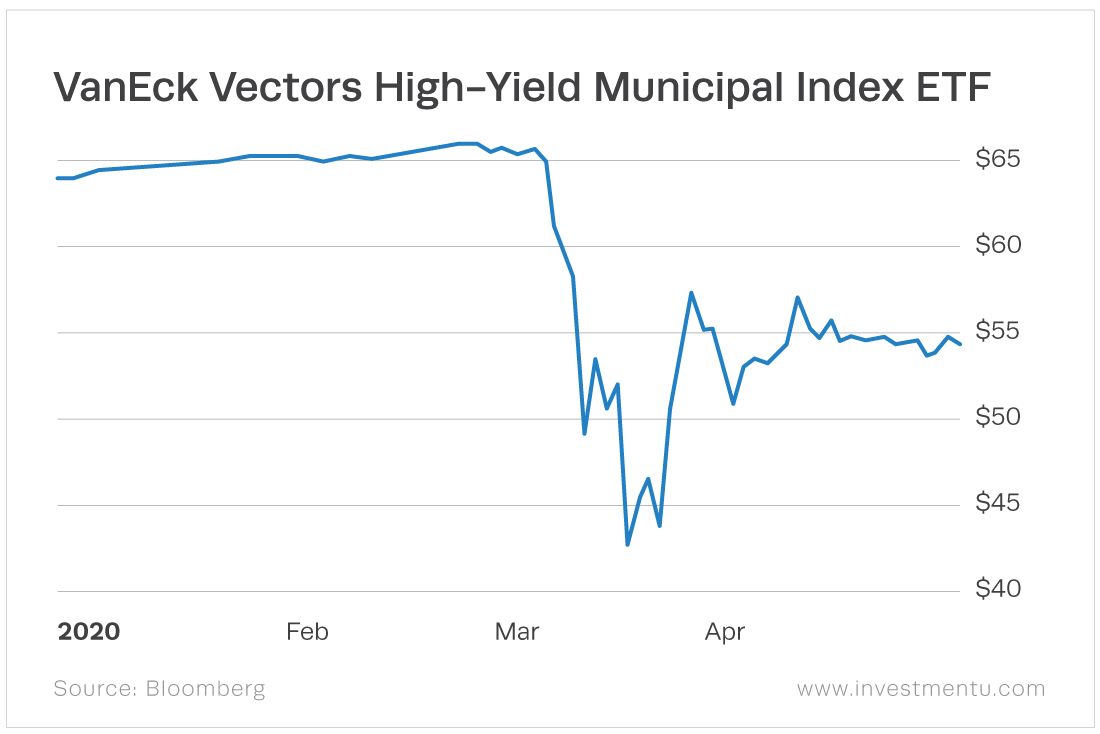
Finally, we have the PIMCO 25+ Year Zero Coupon U.S. Treasury Index ETF (NYSE: ZROZ). Zero coupon means it doesn’t pay interest (the coupon), but instead is sold at a discount to face value upon maturity. The year-to-date total return is 34.88%!
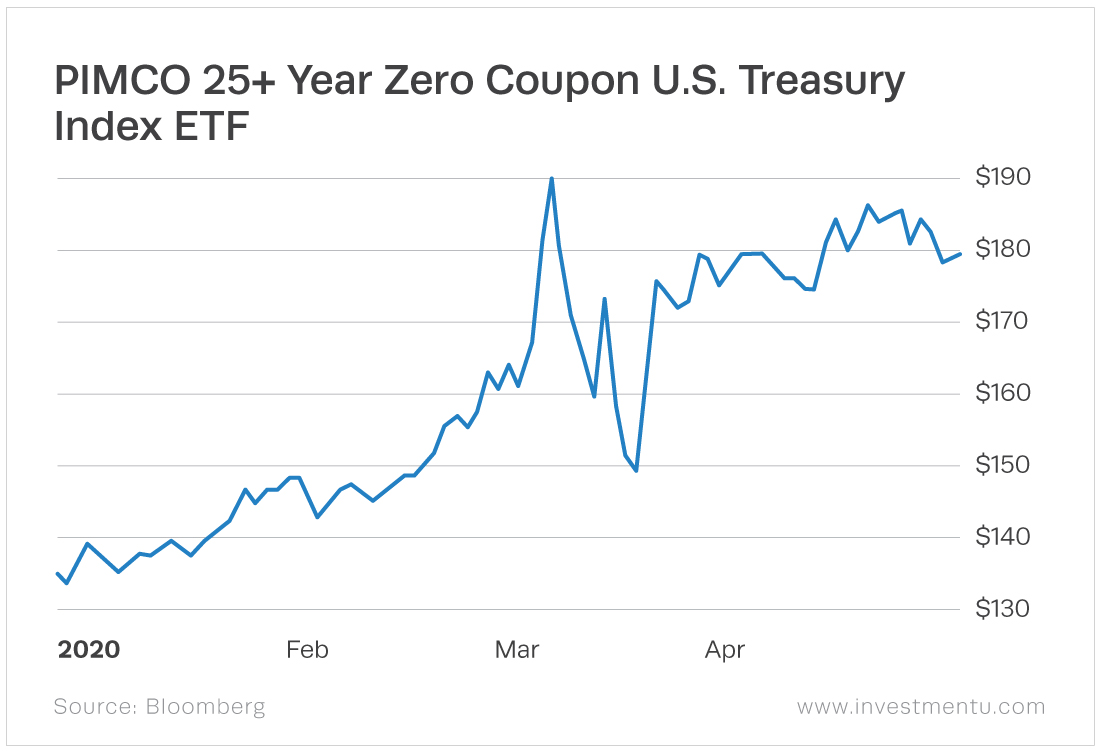
As you can see above – and as you will hear from Rachel and Marc in the recent Market Wake-Up Call – bonds come in all different shapes and sizes. It pays to understand the differences and why there is a huge principal protection advantage to buying individual bonds versus investing in bond funds – especially high-yield bond funds.
If you enjoyed this article on investment-grade and junk bonds, sign up for our free Investment U e-letter! You’ll receive daily advice and research from our experts. Whether you’re a beginner or expert investor, there’s something for everyone.
About Julia Guth
Julia Guth has been the CEO and Executive Publisher of The Oxford Club since its inception in Baltimore more than 25 years ago.
She is also the Founder of Investment U, the educational arm of The Oxford Club. In addition, she’s the Founder and Executive Director of the nonprofit Roberto Clemente Health Clinic in Nicaragua.
Julia credits the Club’s success to its long-term global perspective, as well as the talented advisory and service teams she’s put together on behalf of its Members. Julia graduated from the University of Colorado, Boulder, with a B.A. in Latin American studies and holds an MBA from Thunderbird, The American Graduate School of International Management in Phoenix, Arizona.




